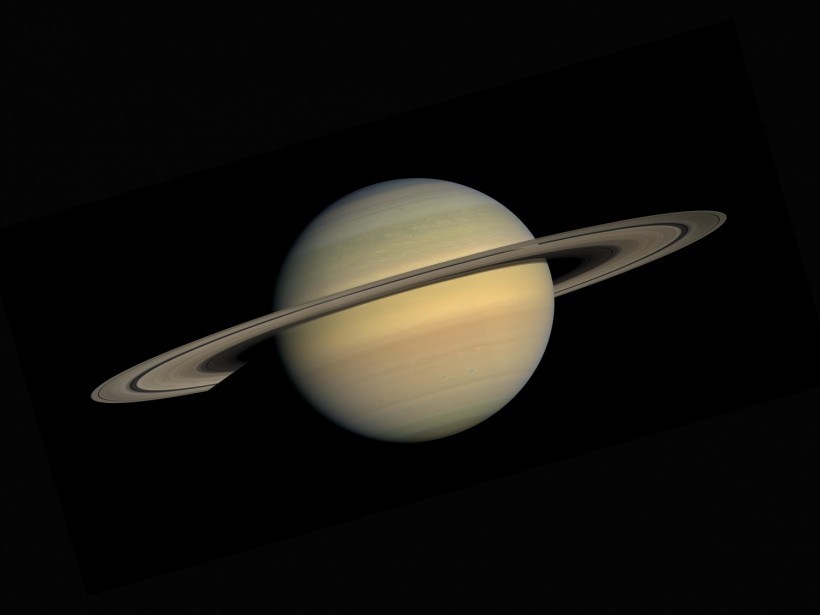Although the plumes discovered by Cassini's spacecraft on Saturn's moon needed to be directly identified, a team of researchers used a model to find evidence that they had phosphorus. In the search for extraterrestrial life, elements like these that serve as the foundation of life are important. In the research study released in the Proceedings of the National Academy of Sciences, the scientists claim that phosphorus is possibly available.

Enceladus May Have Signs of Life
According to Dr. Christopher Glein, a co-author of a publication and a recognized authority on extraterrestrial oceanography, the planet Enceladus is one of the main objectives in humanity's hunt for life in our solar system. He claimed the discoveries were made possible by the data gathered throughout the years since NASA's Cassini spacecraft visited the Saturn system.
The Cassini mission analyzed the ice grains and water vapor that erupted into space from fissures on the moon's icy surface, which were discovered in the Enceladus subsurface.
The hunt for extraterrestrial life has become more intriguing as Glein's team found new proof of a crucial component of life in the subsurface ocean of Saturn's moon Enceladus. A vital component of life they are eyeing is the dissolved phosphorus that should be in relatively high concentrations in Enceladus' ocean.
Glein said that they have learned that the plume contains almost all the basic requirements of life as we know it. He continued that while the bioessential element phosphorus has yet to be identified directly, their team discovered evidence for its availability in the ocean beneath the moon's icy crust.
Phosphorus Discovery on Enceladus
According to Glein, the focus of the solar system's search for extraterrestrial habitability has changed. Phosphorus presents an interesting case because previous research suggested that it might be scarce in the ocean of Enceladus, which would dim the prospects for life. He said that they now search for the building blocks for life, including organic molecules, ammonia, sulfur-bearing compounds, and the chemical energy needed to support life.
Phosphorus, in the form of phosphates, is essential for all living things on Earth. This element is crucial for producing DNA and RNA, energy-carrying molecules, cell membranes, bones, and teeth in humans and animals, as well as the plankton microbiome in the ocean.
Subsurface Ocean Features of Planets
Oceans beneath a surface layer of ice are common in the solar system. This has been proven through several discoveries in the past 25 years. Such planets include Pluto as well as the icy satellites of the big planets, such as Europa, Titan, and Enceladus.
According to Science Daily, to sustain temperatures that support surface liquid water, planets with surface seas like Earth must stay within a specific range of distances from their host stars. The number of habitable planets anticipated to exist across the galaxy is considerably increased because interior water ocean worlds can occur over a far more extensive range of distances.
A Chance of More Habitable Oceans on Other Planets
Based on knowledge gained from Cassini's discovery of Enceladus, team members did thermodynamic and kinetic modeling that replicates the geochemistry of phosphorus. Throughout their investigation, they created the most thorough geochemical model of seafloor mineral dissolution in the Enceladus ocean, and they predicted that phosphate minerals would be unusually soluble there.
According to Glein, the underlying geochemistry is so elegantly simple that the presence of dissolved phosphorus is unavoidable, reaching concentrations that are comparable to or even higher than those seen in saltwater from present-day Earth.
This suggests that the ocean of Enceladus is more likely than not to be habitable, which is good news for astrobiology. He remarked that we must return to Enceladus to determine whether a habitable ocean is inhabited.
RELATED ARTICLE: Saturn's Moon Enceladus' Tiger Stripes Origin Explained
Check out more news and information on Space in Science Times.


![Extinct Giant Salmon Had Tusk-Like Spikes Protruding Out of Its Snout That Can Easily Kill Shark, Other Large Marine Animals [Study]](https://1721181113.rsc.cdn77.org/data/thumbs/full/53304/89/56/50/40/extinct-giant-salmon-had-tusk-like-spikes-protruding-out-of-its-snout-that-can-easily-kill-shark-other-large-marine-animals-study.png)











